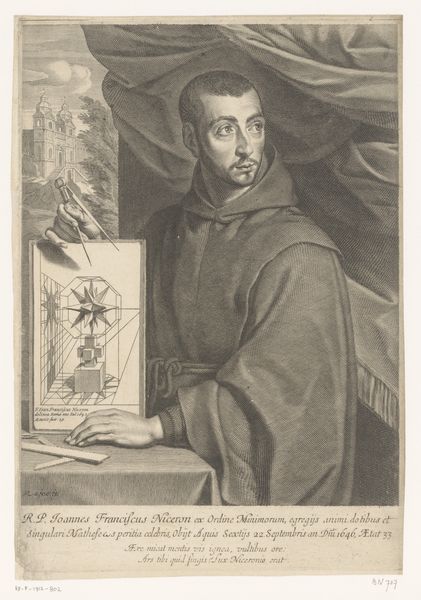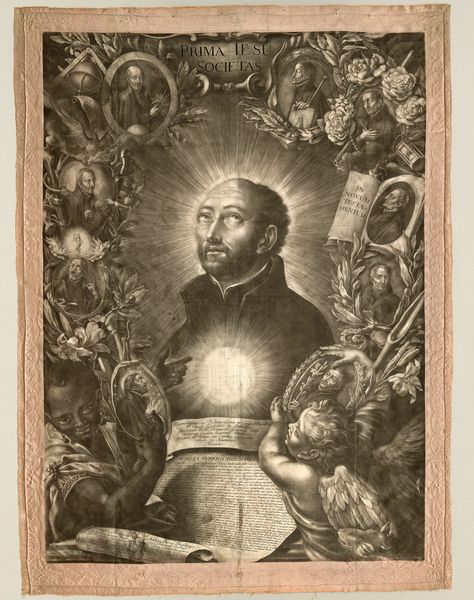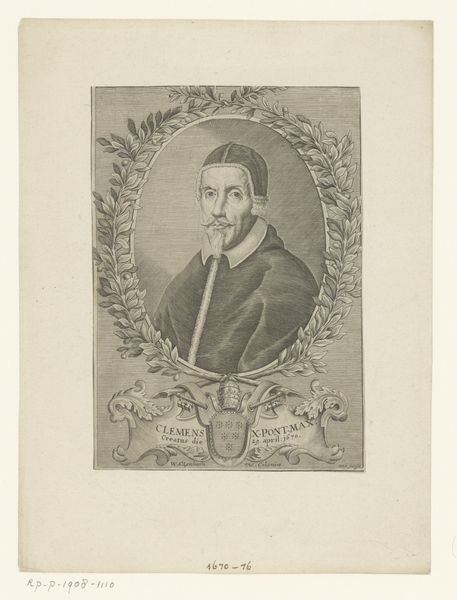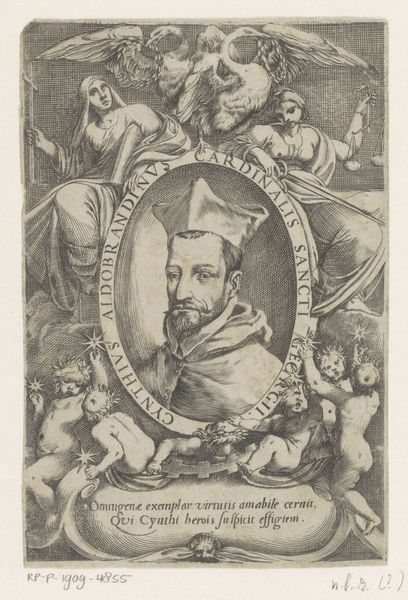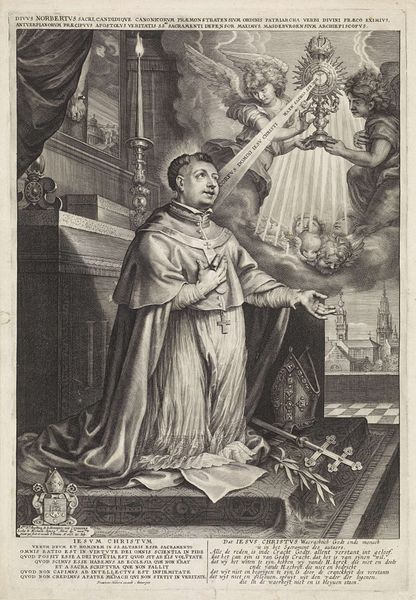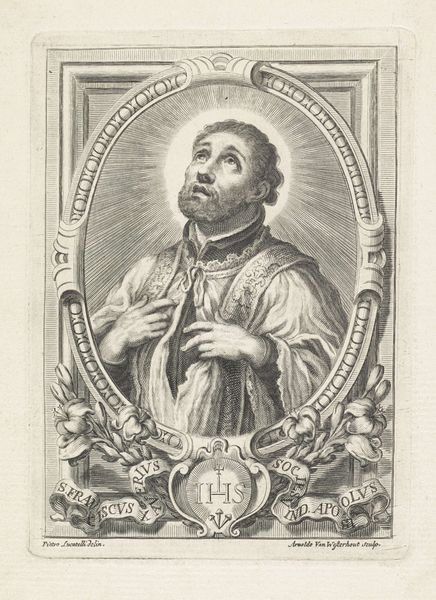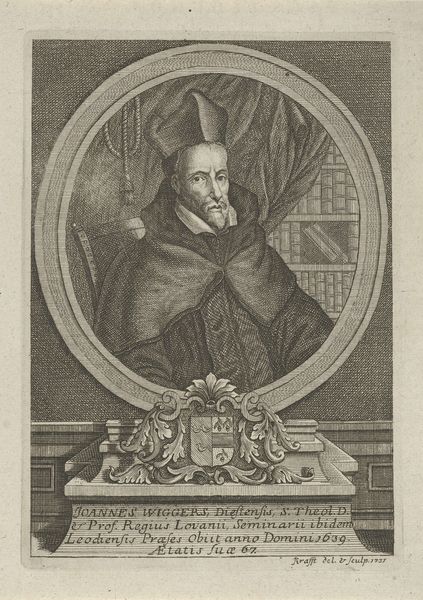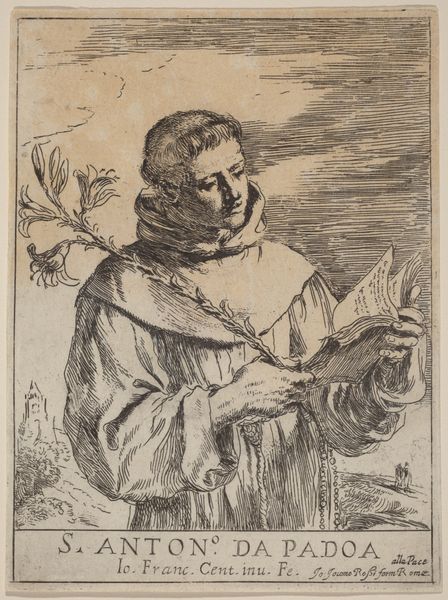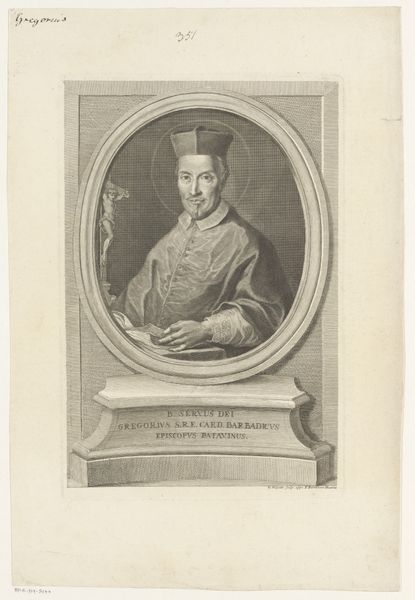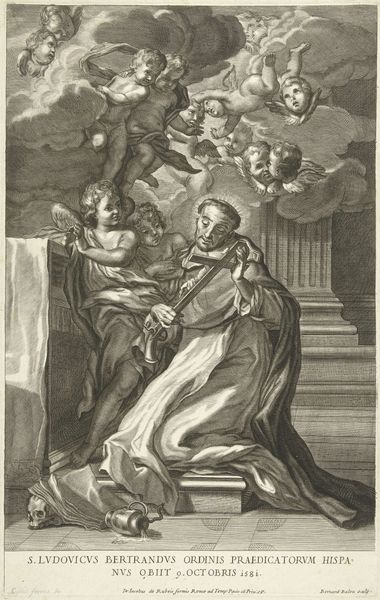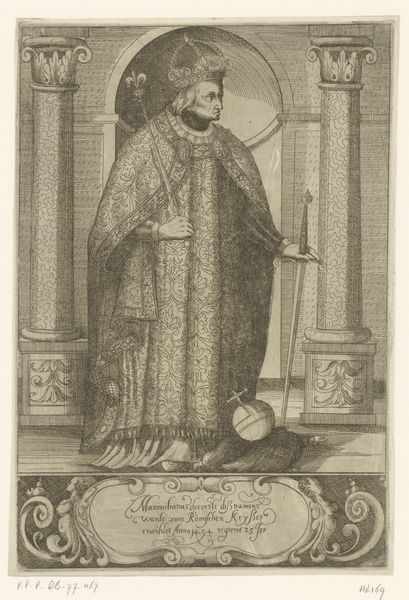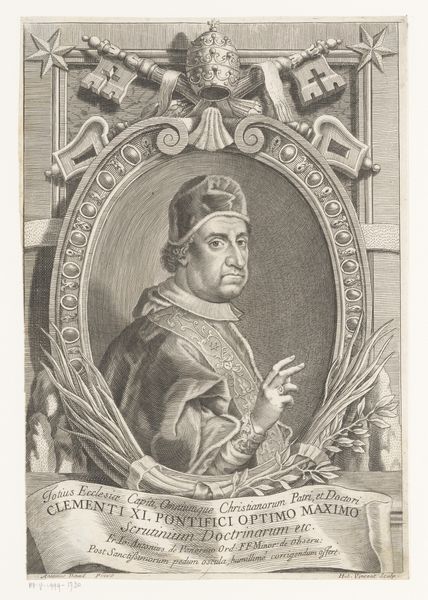
print, engraving
#
portrait
#
pencil drawn
#
baroque
# print
#
old engraving style
#
charcoal drawing
#
figuration
#
line
#
history-painting
#
engraving
Dimensions: height 299 mm, width 174 mm
Copyright: Rijks Museum: Open Domain
Johann Heinrich Störchlin created this portrait of Gerhard Pauli using engraving techniques sometime before 1737. At first glance, the composition seems rigidly divided, juxtaposing the earthly and the divine. The lower portion of the engraving is grounded with the solid, lifelike depiction of Pauli at his desk, while the upper portion dissolves into a more ethereal realm inhabited by religious figures and symbols. This division isn't just spatial; it's a carefully constructed dichotomy between the material and the spiritual. Note how Pauli is shown engaged with earthly knowledge—books and writing implements—while above him, we see symbols of divine knowledge and figures associated with religious authority. Here, Störchlin is engaging with the semiotic language of religious art, using symbols like the dove of the Holy Spirit and the figures of the saints to communicate complex theological ideas. Consider also how the direction of Pauli’s gaze and gesture anchors the composition, drawing our eye towards the open book. This visual pathway subtly suggests an ongoing dialogue between earthly and divine wisdom. The engraving prompts us to consider how these systems of belief structure our understanding of the world.
Comments
No comments
Be the first to comment and join the conversation on the ultimate creative platform.
